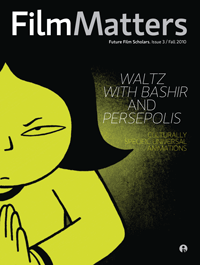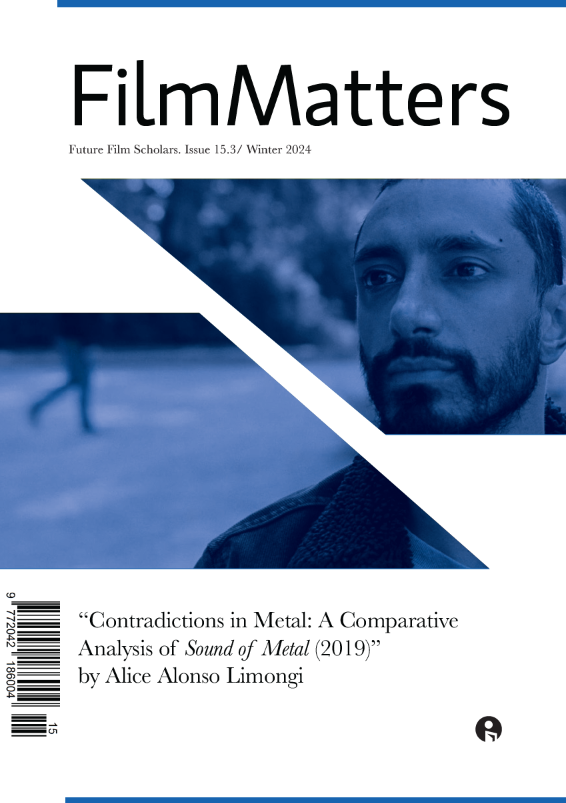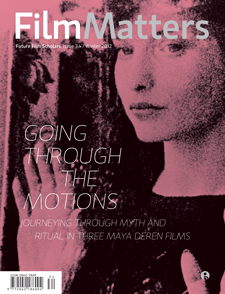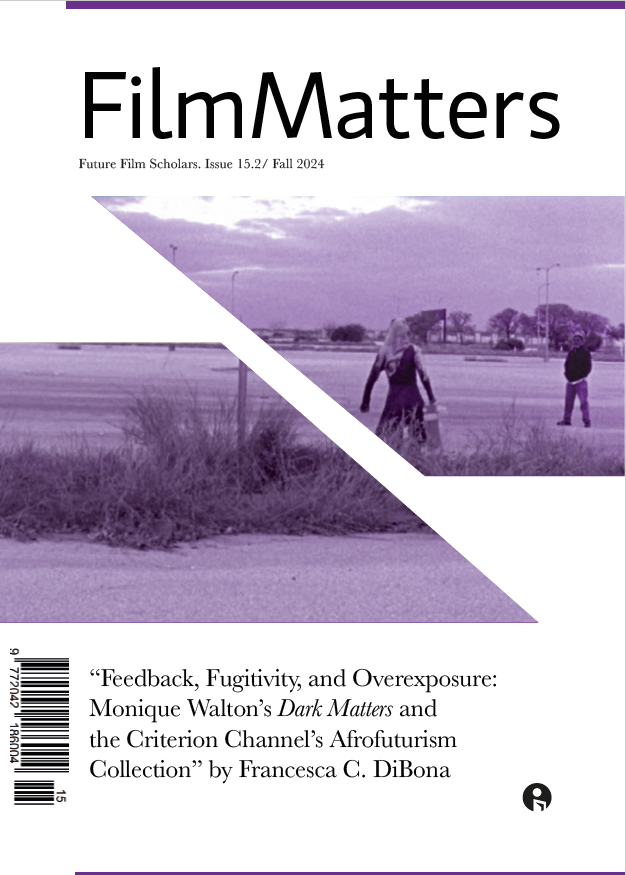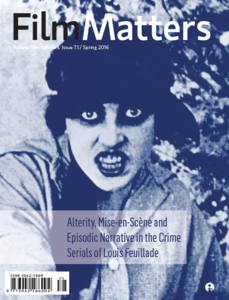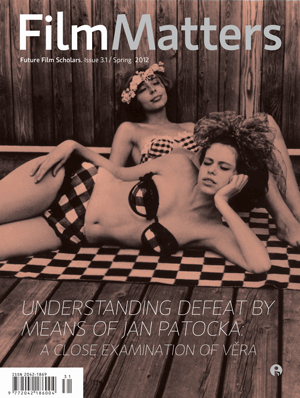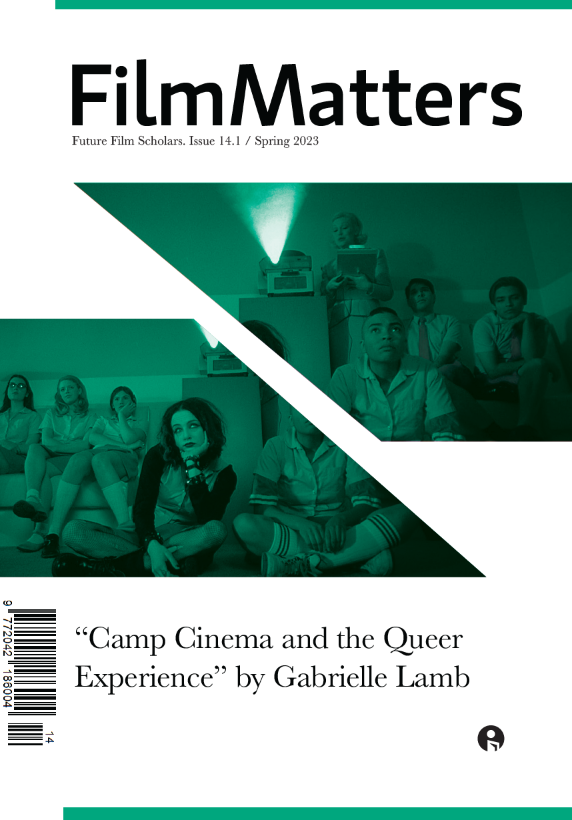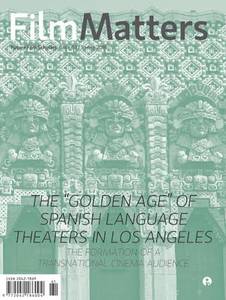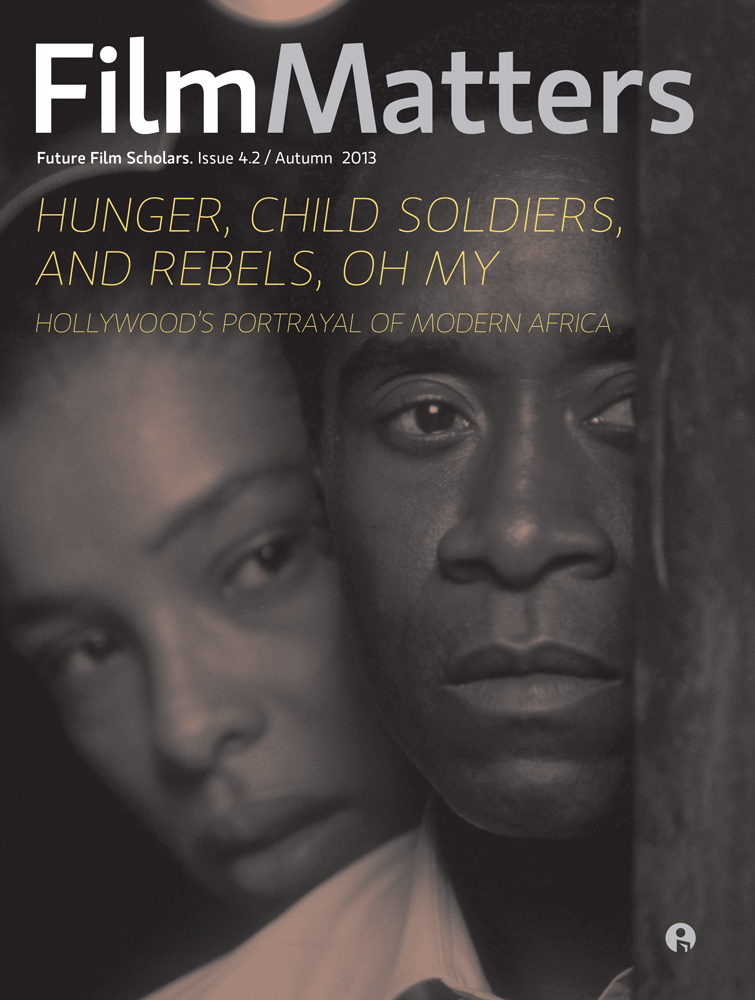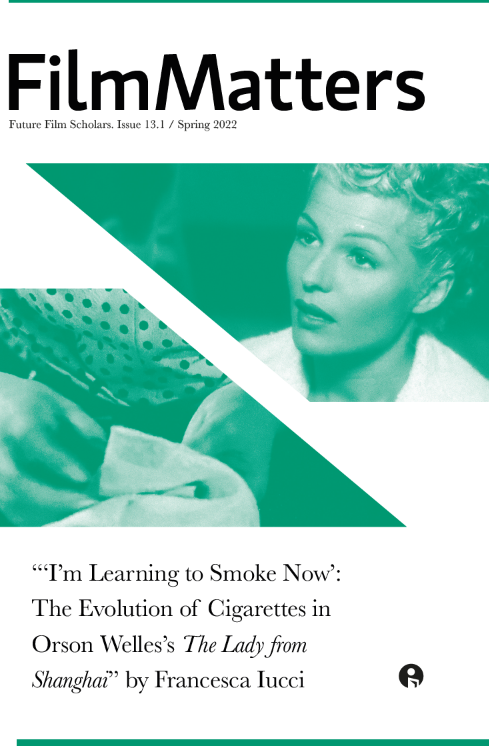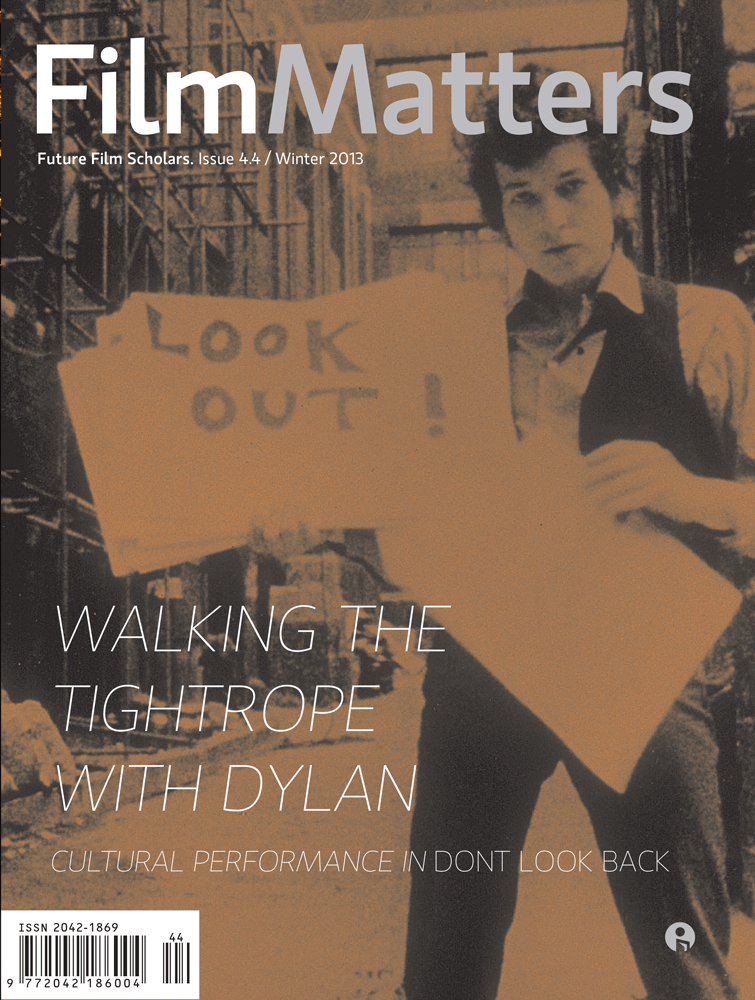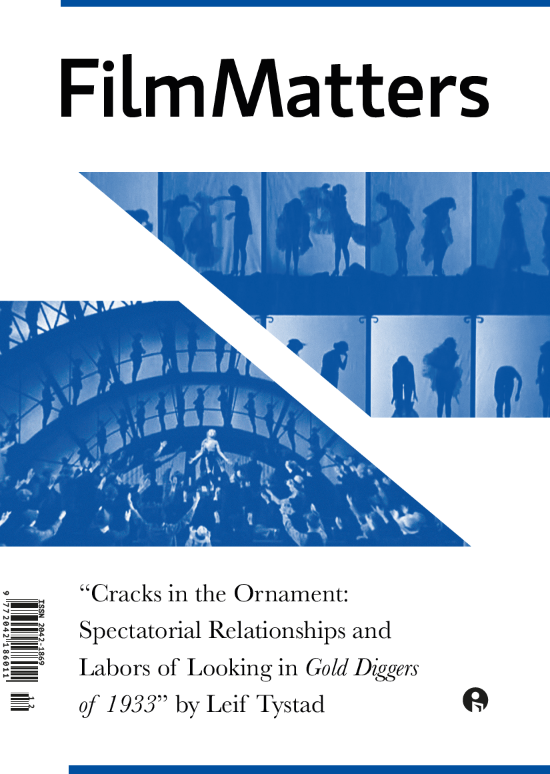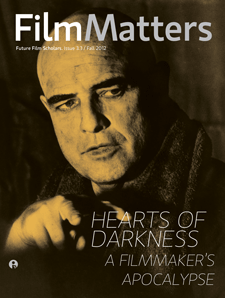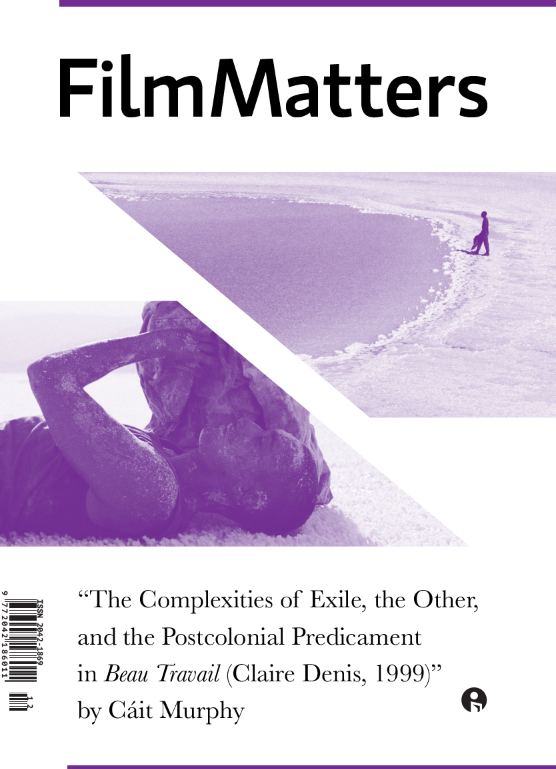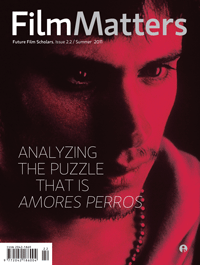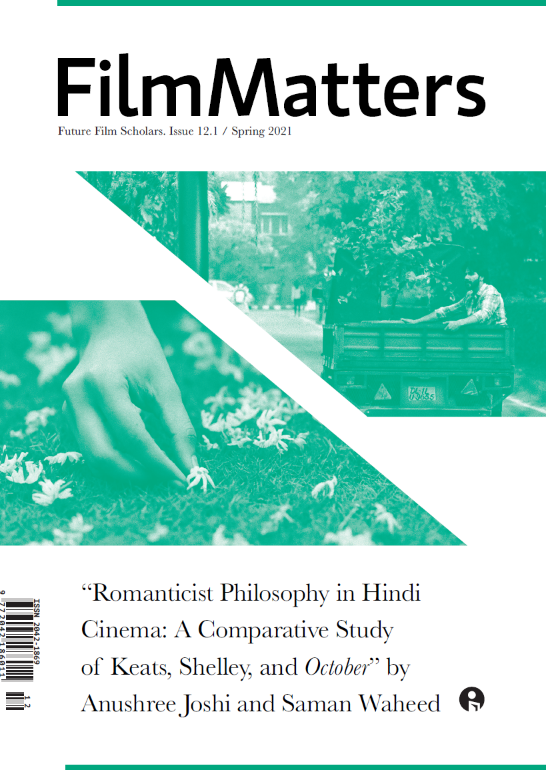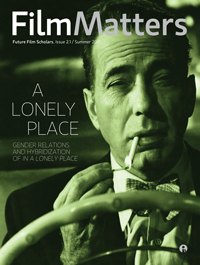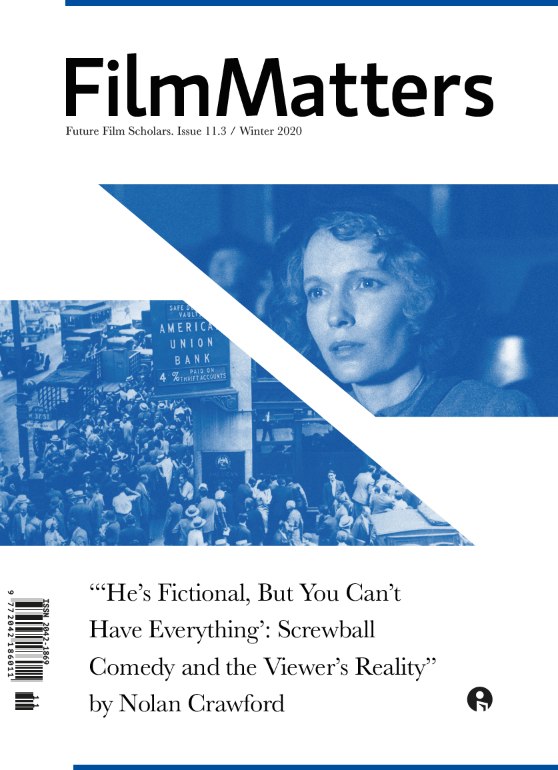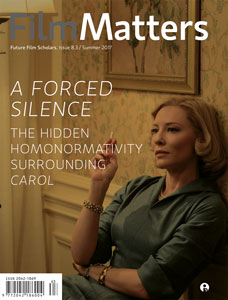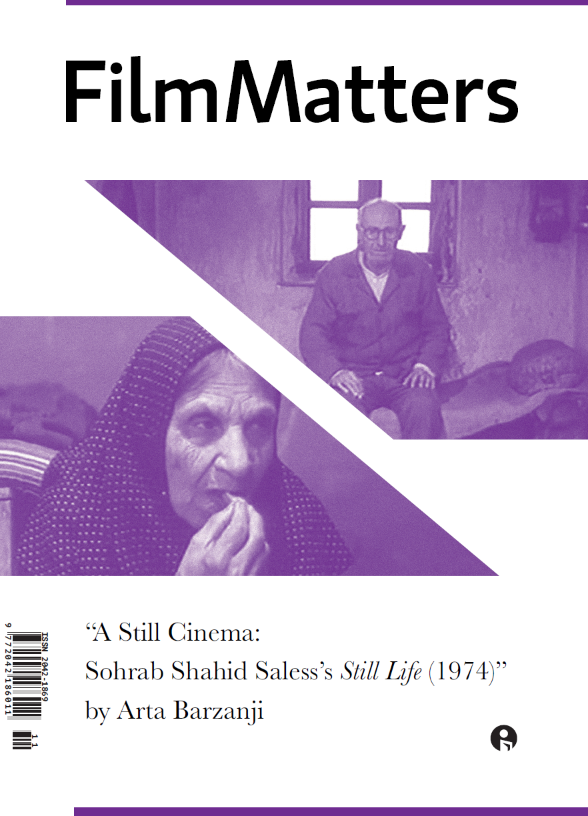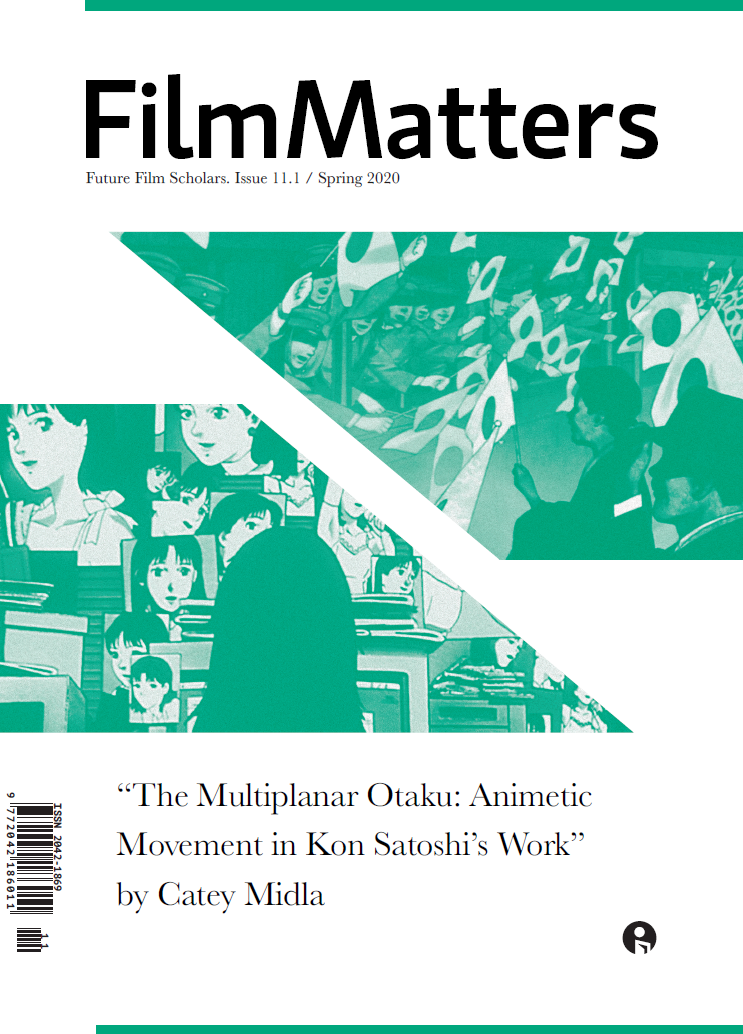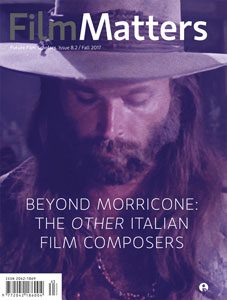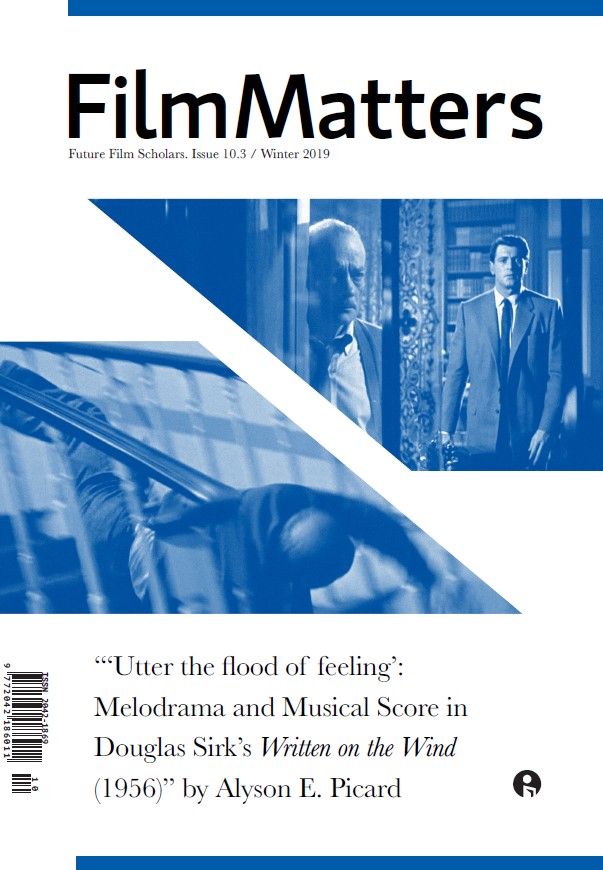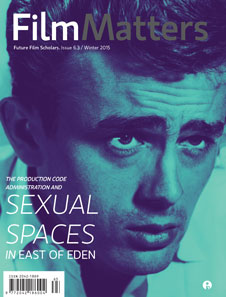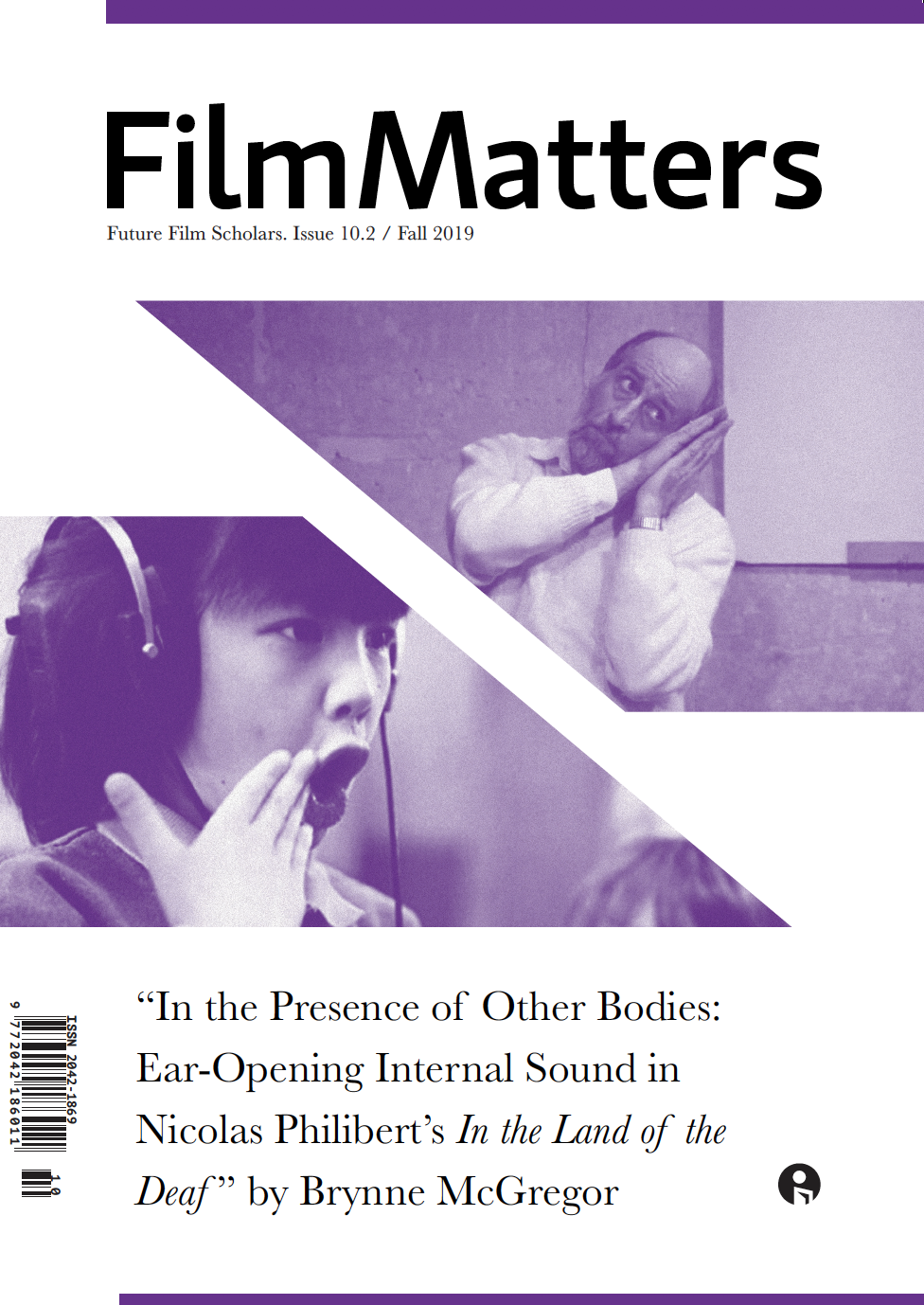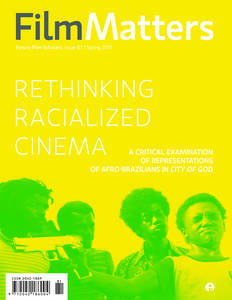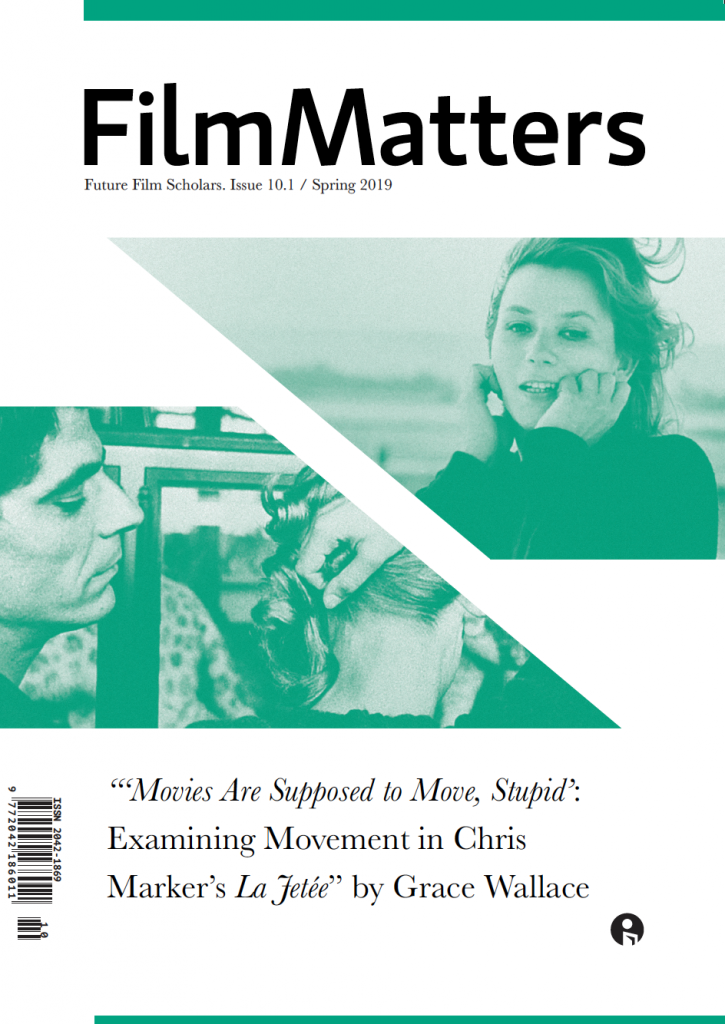Film Matters is actively seeking book and film/DVD/Blu-ray reviews by current undergraduate students for future print issues.
Continue readingOne Tough Dame: The Life and Career of Diana Rigg (2024) by Herbie J. Pilato. Reviewed by Elizabeth Stengell
I hope there’s a tinge of disgrace about me. Hopefully, there’s one good scandal left in me yet.
Dame Diana Rigg
Thus begins the first line of One Tough Dame, a promising start to Herbie Pilato’s deep dive into the life and career of the boldly charming British actress. A much beloved seven-time Emmy nominee, Rigg’s acting career spanned just over sixty years at the time of her passing in 2020. Her most well-known roles include the secret spy Emma Peel in The Avengers (1965–1968), Mrs. James Bond in On Her Majesty’s Secret Service (1969), and Olenna Tyrell in Game of Thrones (2013–2017). Diana Rigg also demonstrated a great love for theater and acted in many productions, including Medea (1993–1994) on the West End and Broadway, My Fair Lady (2018) on Broadway, and several London productions of Shakespeare’s works. All of this to say that it is an unfathomable mystery to me how I never heard of such an accomplished and famous woman before reading this book.
Continue readingFilm Matters Announces New Partnership with University of Utah
Film Matters announces a new partnership and a new base of operations. Effective August 2025, the journal is now housed within the Department of Film & Media Arts at the University of Utah in Salt Lake City. There, all journal activities continue, including our long-term publishing relationship with Intellect Press, UK, alongside all teaching-related work for the student-led editorial board.
The Department of Film & Media Arts is housed within the University’s College of Fine Arts, with sister departments in Music, Theater, Dance, and Art & Art History. Thousands of students call the College home, and our new base of operations includes a fully functional cinema, as well as cutting-edge facilities in all aspects of film production and critical studies. The College engages thriving local and global arts communities, within Utah itself, as well as across satellite provisions in South Korea, France, and Italy. We think Film Matters has an ideal new home in Salt Lake City, poised for an exciting new phase of evolution.
This represents an enormous fresh-start opportunity and we are liaising with Intellect right away to consider ways the journal, and everyone connected to it, can benefit from the new berth, at an ambitious world-class university, in a major global hub of film and media culture. The sky’s the limit!
But our mandate continues: to mentor and showcase emerging film and media scholars, fostering an inclusive diverse community of makers, writers and thinkers engaged with all facets of global sound and moving image cultures, past, present, and future.
While our online site remains https://www.filmmattersmagazine.com/, we now have a new LinkedIn page – please follow us to keep up with the latest FM news!
We thank you for your ongoing support and engagement! Film Matters values all of its partners and is excited for this new-growth phase of its activities.
Cruelty Is Natural. All That Breathes (2022) reviewed by Ella Rowsey

A beautiful bird with a yellow beak cracks open its own egg and starts to eat. In the distance, the bustle and action of a riot starts on the streets. The narration sounds, “cruelty is natural.” It is a war zone in New Delhi, and hope seems bleak. This act of cannibalism only feeds into feelings of a forsaken earth and the hollow sinking feeling that humans are at the root of it. Trash overtakes the city, sewage overflows the streets, and violent protests overwhelm society. One abundantly clear thing is that people are violent, and nature is violent. However, a bright light shines through as two men, despite the conflicts and setbacks, inspire hope for themselves and their legacy.
Continue readingSomething Borrowed, Something Blue: Love, Loss, and Life in Little Women and The Farewell. By Alisha Tan, Georgia Tech
In 2019, art blurred the lines between joy and sorrow. Ocean Vuong published his novel On Earth We’re Briefly Gorgeous, wondering if “sadness and happiness [could] be combined” to simplify life’s spectrum of mirth and misery so “you didn’t have to live on one side or the other” (94). In the same year, two critically acclaimed films answered that question with a resounding “yes.” Through their respective films, Little Women (2019) and The Farewell (2019), Greta Gerwig and Lulu Wang explore the multifaceted nature of sadness and happiness, coming from two vastly different perspectives to dissect the same premise. Both directors intertwine weddings with death — the happiest day of someone’s life with the saddest — to underscore the weight of leaving a given family for a chosen one and the painful loss of innocence that occurs when maturing.
Continue readingTapping into a Legend: The Unseen Side of Ellie Powell Revealed in Eleanor Powell: Born to Dance. Reviewed by Abbie Reams

Throughout the writing, our challenge remained how to relentlessly search out and present to the world “Ellie Powell” behind the mask of “Eleanor Powell.”
—Paula Broussard
Having turned the final page of Eleanor Powell: Born to Dance, I can attest that co-authors Broussard and Royère have triumphed over their challenge by giving readers this intimate biography of Eleanor Powell—a dance legend from the Golden Age of Hollywood. Drawing on old correspondence, studio production records, celebrity testimonials, and other rare documents to craft their detailed narrative, Broussard and Royère meticulously chart Eleanor’s journey from a child prodigy on Broadway to Hollywood’s preeminent female tap dancer. They highlight her breakout role in Born to Dance (1936) and her seminal collaboration with Fred Astaire in Broadway Melody of 1940, which cemented her as a rare talent blessed with technical prowess, rhythmic musicality, and stalwart drive; in other words, a female rival capable of matching Hollywood’s top male dancers. Broussard and Royère conclude with Eleanor’s brief retirement, tumultuous marriage to Glenn Ford, and triumphant return to the spotlight after a sixteen-year hiatus. All at once a storybook and historical text, this biography unfurls with vivid prose and a rich catalog of facts to pull back the curtain on Eleanor Powell—the sensational star—to reveal Ellie—the human being, the inspirational woman worth remembering.
Continue readingCFP 17.2: “Excess”
Film Matters is pleased to announce Chapman University’s CFP 17.2 for their sixth special issue; this year’s theme is “Excess.” Submissions from undergraduates and recent graduates are encouraged for consideration in issue 17.2 (2026).
The deadline for submissions is February 1, 2026.
As a reminder, Film Matters is now using MLA 9th edition style, although we will still accept MLA 8th edition formatting — so please prepare your submissions accordingly. Purdue OWL’s MLA Formatting and Style Guide is an excellent resource to consult for help with this.
For more information about this call for papers, please download the official document (PDF):
In addition to your essay text file, submissions should now include our mandatory contributor intake form, which collects author and essay metadata, as a separate attachment; all other identifying information should be removed from the body of the essay text file, as well as the headers/footers, in order to aid the blind peer review process.
Submissions and questions should be directed to:
- William Yonts (wyonts@chapman.edu)
Please note that Film Matters does not accept submissions that are currently under review by other journals or magazines.
Undergraduates and recent graduates, please submit your film-related research papers today! Chapman University looks forward to receiving your papers!
Exploring the Human Experience Through Film: An Interview with Sonia and Miriam Albert Sobrino. By Holley Anne Brabble
Sonia and Miriam Albert Sobrino, also known as the ALSO Sisters, are two incredibly talented filmmakers and screenwriters. They bring their unique collaboration style to every project they pursue. This style has also resulted in success and acclaim from numerous film festivals. I was lucky enough to get the chance to ask them some questions about their work, worldview, collaboration, and perspectives on film.
HAB: Please tell me about yourselves and your films. What makes you distinctive as filmmakers?
ALSO Sisters: Like most people, we dreamed about filmmaking as kids, but we didn’t pursue it until adulthood, after already working in another career. We come from a humble background, and the arts never felt like a viable path. So, we trained and worked as nurses in Spain and Scotland, which shaped the way we approach filmmaking: hands-on, practical, and not the sit-in-a-chair kind of directing. We value collaboration, but we’re also not afraid to get our hands dirty, both literally and creatively.
This background made us proactive learners. We dove into camera and lighting departments early on so we could make professional-looking films with minimal resources; or scale up when the opportunity arises. That flexibility has helped us build work that functions in indie and larger productions alike.
While our films don’t literally center on healthcare, our past lives as nurses inform them deeply. They often feature characters in transitional spaces, caught between one chapter and the next; wrestling with something emotionally or spiritually cathartic. Thematically and stylistically, our work is shaped by what we’ve witnessed in real life. And while horror is our primary genre, we also venture into nonfiction and other narrative forms when the story calls for it. At the heart of it all is a desire to explore the human experience.
Continue readingWorking as a Team to Tell a Story: An Interview with Madou Elijah Diarrassouba. By Holley Anne Brabble
Madou Elijah Diarrassouba is a documentary filmmaker who started out as a college athlete before making the jump into the world of film. From his time as an athlete, he’s created a down-to-earth and determined work ethic that he uses to fuel his work. His documentaries tell unique and diverse stories. His recent project, Africa Told by Us, reframes the African American experience by highlighting and reconnecting to the rich cultures of several African countries. I recently had the opportunity to talk with him about his journey in the industry and his films.
Holley Anne Brabble: Tell me about yourself, your films, and your journey to get where you are now.
Madou Elijah Diarrassouba: My journey has been from athlete to artist. I played football at Appalachian and my first film project was while I was playing football. I did a documentary on one of my teammates, Demetrius Taylor, who then went on to play for the Lions in the NFL. We did a documentary that kind of discovered the two complex worlds that an athlete typically lives in, on and off the field. It’s called The Hidden, put together during the peak of COVID, and the film did great once we released it so that’s what I would say kind of sparked my filmmaking career.
Continue readingMedia Literacy and the Avant-Garde: An Interview with Mirian Tavares. By Holley Anne Brabble
For many, the study of avant-garde film is an intimidating and hard-to-navigate field. When it comes to this kind of cinema, it’s easy to feel out of your depth, but that doesn’t mean there isn’t much beauty to discover and be had if one is willing to look closer. Professor Mirian Tavares is one those people who has taken a closer look. Focusing on avant-garde cinema from the 1920s-1990s, Professor Tavares has a deep understanding of this cinema as well as other topics. I was lucky enough to be able to ask her some questions about her work with film as well as her more recent publications.
Holley Anne Brabble: Please tell me about your work with avant-garde cinema.
Mirian Tavares: I began working with the historical avant-garde during my doctoral studies. My thesis was dedicated to Luis Buñuel’s early films (Un Chien Andalou, L’Age d’Or, and Las Hurdes), relating them to the Spanish avant-garde (Generation of ’27) and the French avant-garde. My thesis was later turned into a book, in which I analyze all the avant-garde movements in their relationship with cinema.
Continue readingMulticultural Heartbreak and Hilarity: Carmen & Bolude (2025). Reviewed by Holley Anne Brabble

Quick-paced and quick-witted, Carmen & Bolude (2025) is both a lighthearted good time and a deeply introspective watch. The film uses comedy to showcase a deeply multicultural world and all its nuances. The result is an exploration of themes like identity, heritage, culture, and community, while also presenting an entertaining tale of friendship and family.
Continue reading





